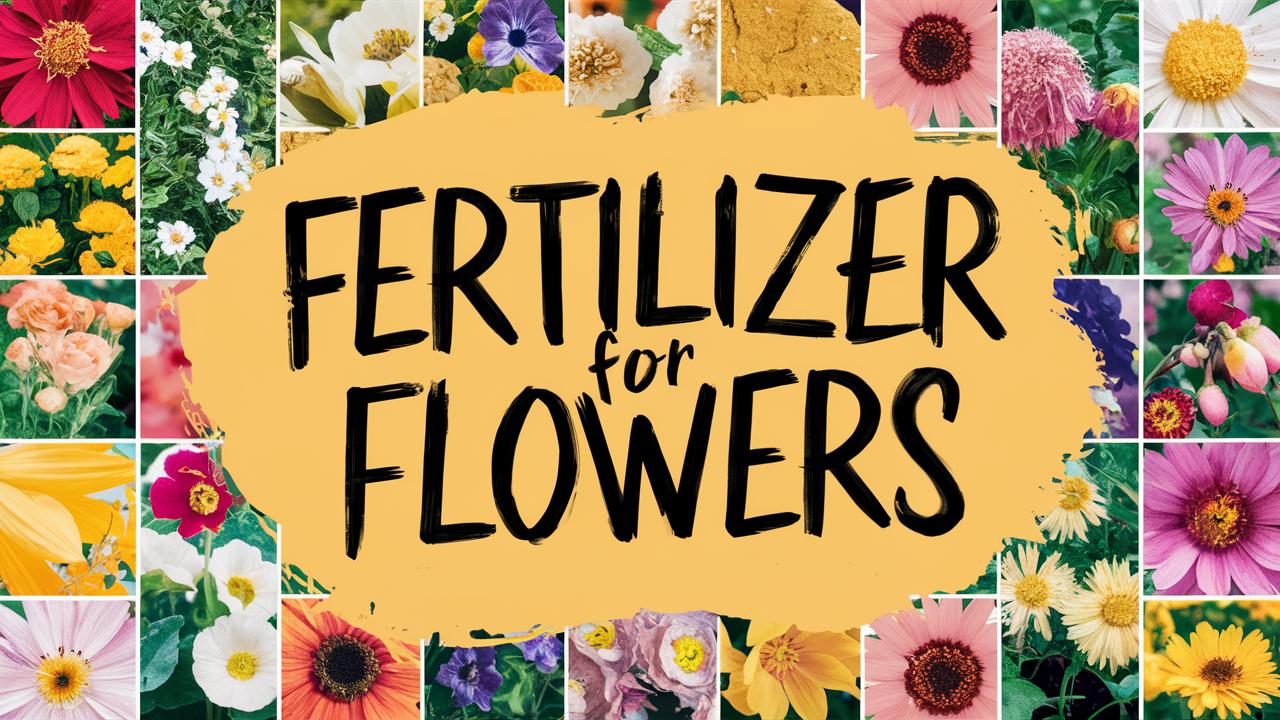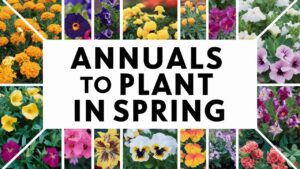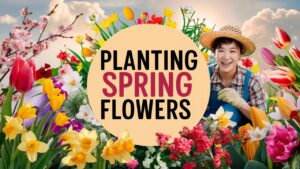In this guide, we’ll explore the types of fertilizers available, key nutrients that flowers need, how to read fertilizer labels, and various application methods to maximize your flowering plants’ potential.
Fertilizer For Flowers
| Image | Name | Rating | Shop |
|---|---|---|---|
 | Scotts Super Bloom |  | |
 | Blossom Booster |  | |
 | Down To Earth Rose & Flower Mix Fertilizer |  |
Scotts Super Bloom
When it comes to fertilizers for flowers, Scotts Super Bloom Water Soluble Plant Food is a great option. It contains high phosphorus levels which help promote blooming in your plants.
This water-soluble plant food can be fed to outdoor flowers, fruiting plants, and even container gardens every 1-2 weeks for the best possible results. Plus, it’s formulated to feed plants instantly once applied – so you won’t see any long wait times before seeing improvement. Just keep in mind to follow the usage instructions carefully to avoid burning your plants.
Blossom Booster
Jack’s Classic 10-30-20 Blossom Booster Water-Soluble Fertilizer with Micronutrients is a high-quality product that helps increase color and quantity of blooms in flowering plants. With its perfect N-P-K ratio of 10-30-20, this fertilizer promotes healthy growth and vibrant flowers, making it an excellent choice for gardeners who want to get the most out of their blooming plants.
This versatile fertilizer can be used as a foliar or root feeding product, providing flexibility in application. The water-soluble powder is easy to mix with water, creating multiple gallons of liquid fertilizer that go further than traditional liquids. Additionally, it comes with a convenient measuring spoon for precision application and includes added micronutrients that ensure optimal growth without the need for additional fertilization. Whether you’re looking for a reliable way to boost blooms or want to simplify your gardening routine, Jack’s Classic Blossom Booster is an excellent choice.
Down To Earth Rose & Flower Mix Fertilizer
The Down To Earth Organic Rose & Flower Mix 4-8-4 is a great choice for gardeners looking to promote healthy growth and vibrant blooms in their flowers. This all-natural fertilizer is specifically formulated to provide the necessary nutrients for robust foliage and stunning flowers.
This OMRI-listed product can be used on everything from roses and perennials to vegetable gardens, flower beds, containers, and houseplants. With its balanced 4-8-4 formula, it supplies ample nitrogen for growth, extra phosphorus for blooms, and potassium and trace elements for overall health. By incorporating this fertilizer into your gardening routine, you can enjoy a thriving garden all season long.
Fertilizer
This fertilizer from Schultz is a good choice for flowers that need a continuous supply of nutrients. The slow-release formula provides a balanced diet of nitrogen, phosphorus, and potassium to promote healthy growth and blooming.
The 12-24-12 ratio in the Schultz 018065 Spf48270 Slow-Release Bloom Fertilizer is suitable for most flowering plants. This fertilizers’ size of 3.5 lbs should last a reasonable amount of time for small to medium-sized gardens or pots when applied according to package instructions.
Fertilizer.
For flower enthusiasts looking for a reliable fertilizer to promote healthy blooms, we recommend Dr. Earth Flower Girl Bud & Bloom 3-9-4 Organic Fertilizer Formula. This product is specifically designed to cater to the unique needs of flowering plants, providing essential nutrients and fostering vibrant growth.
This organic fertilizer comes in a convenient 4-pound bag, making it easy to apply directly to your garden beds or containers. With its carefully balanced formula (3-9-4), Dr. Earth Flower Girl Bud & Bloom provides optimal levels of nitrogen, phosphorus, and potassium for maximum flower production. Whether you’re caring for roses, sunflowers, or annuals, this fertilizer is sure to help them thrive.
Liquafeed Refill
Miracle-GRO 100404 LiquaFeed Bloom Booster Flower Food is a product that can help flowers in your garden or indoor space thrive. This liquid fertilizer is specially formulated to bloom and feed plants, providing essential nutrients for healthy growth and vibrant colors.
Available in a pack of four, Miracle-GRO 100404 provides a convenient way to fertilize multiple plants with ease. However, note that this product may not be sufficient on its own to address nutrient deficiencies or soil imbalances, particularly if your plant’s roots lack proper exposure to the nutrients contained in this liquid fertilizer.
Miracle-Gro Performance Organics Blooms Plant Nutrition Granules
The Miracle-Gro Performance Organics Blooms Plant Nutrition Granules are a good choice for fertilizing flowering plants. These granules contain OMRI-listed plant food that is made from organic and natural ingredients.
If you’re looking to promote more blooms in your flowers, this product might be worth considering. The manufacturer recommends reapplying every 4-6 weeks and watering regularly for the best results. It’s noted to cover an area of up to 165 sq. ft., so it may be suitable for larger plant arrangements.
Bloom Booster
The Scotts Rose & Bloom Continuous Release Plant Food, 3 lb is a reliable choice for fueling flowers throughout the season. With its steady feeding system, you can expect increased blooms on roses, annuals, and perennials.
This plant food has a convenient release period of up to two months, allowing you to focus on other aspects of gardening without constant reapplication. Its broad compatibility ensures that it works well for all types of flowering plants. To use, simply sprinkle 1-2 cups around the base of each plant according to the manufacturer’s instructions. The safe formula avoids overfeeding, making it unlikely to cause burn damage.
Flowering Food
The True Organic Annuals & Perennials Food is a standout choice when looking for an organic fertilizer to promote lush foliage and stunning blooms in your flowering plants. By feeding your flowers with this carefully crafted blend of ingredients, you can expect vibrant colors and robust growth that takes your garden to the next level.
This versatile fertilizer works well on both in-ground and container plantings, making it perfect for a wide range of gardening needs. Additionally, its generous coverage area means a single 4lb bag can easily cover up to 70 sq. ft. – ideal for multiple plantings or larger garden spaces. Simply apply monthly during the growing season for continuous nourishment that supports healthy growth and flowering all season long!
How To Choose a Fertilizer For Flowers
Growing beautiful flowers in your garden or on your balcony is a rewarding endeavor that can bring joy and tranquility into your life. However, the secret to flourishing blooms often lies beneath the soil. Choosing the right fertilizer for your flowers can drastically impact their health, bloom quality, and overall growth. Whether you’re a novice gardener or a seasoned horticulturalist, understanding how to select the appropriate fertilizer is essential for cultivating vibrant, resilient flowers.
Understanding Flower Nutritional Needs
Before diving into the types of fertilizers available, it’s crucial to understand the nutritional needs of flowers. Much like humans, plants require a balanced diet comprising water, minerals, and macronutrients. The essential nutrients for flowers can be categorized into three main types: primary nutrients, secondary nutrients, and micronutrients.
Primary Nutrients: N-P-K
The primary nutrients are represented by the acronym N-P-K, which stands for nitrogen (N), phosphorus (P), and potassium (K). Each of these elements plays a vital role in flower health:
Nitrogen (N) promotes lush green foliage and vigorous growth. It is particularly important during the vegetative growth phase of flowering plants.
Phosphorus (P) is crucial for root development and flower formation. It encourages blooming and is vital during the flowering stage, as it helps plants produce vibrant and abundant blooms.
Potassium (K) helps regulate various physiological processes within the plant. It enhances flower color, increases resistance to diseases, and supports overall plant health.
Secondary Nutrients and Micronutrients
While N-P-K are vital, flowers also require secondary nutrients like calcium, magnesium, and sulfur, as well as trace elements such as iron, manganese, and zinc. Calcium helps build cell walls, magnesium is essential for photosynthesis, and sulfur contributes to the production of proteins. Remembering that flowers need a well-rounded nutritional profile can help you make better decisions about fertilizer selection.
Types of Fertilizers Available
When choosing a fertilizer, gardeners generally have two primary options: organic and synthetic chemicals. Each type comes with its own set of benefits and limitations.
Organic Fertilizers
Organic fertilizers are derived from natural sources such as plant and animal waste. They include compost, manure, bone meal, fish emulsion, and seaweed extracts.
Advantages:
Soil Health: Organic fertilizers improve soil structure and enhance microbial activity, promoting healthier root systems.
Slow Release: They provide a steady supply of nutrients over time, reducing the risk of chemical burn and nutrient leaching.
Eco-Friendly: Being biodegradable, organic options are more environmentally friendly and contribute to sustainable gardening practices.
Disadvantages:
Nutrient Concentration: Organic fertilizers often have lower nutrient concentrations than synthetic options, requiring larger quantities for the same impact.
Timing: Nutrient release can depend on soil temperature and moisture, which might delay availability and affect flowering.
Synthetic Fertilizers
Synthetic or chemical fertilizers are manufactured through industrial processes and typically contain a higher concentration of nutrients. They may come in granular or liquid form and are often formulated to deliver specific N-P-K ratios tailored for flowering plants.
Advantages:
Immediate Impact: Because they’re highly concentrated, synthetic fertilizers can provide immediate nutrient availability, leading to rapid plant growth and flowering.
Precision Formulations: They can be formulated to meet specific plant needs, making them effective for particular flowering species.
Disadvantages:
Soil Degradation: Prolonged use can lead to soil degradation, harming beneficial microorganisms and affecting long-term plant health.
Risk of Nutrient Burn: The high nutrient concentration can easily lead to chemical burns if not applied correctly.
Deciphering Fertilizer Labels
When selecting a fertilizer, the label can provide a wealth of information to guide your choice. Understanding how to read these labels is essential for selecting the right product for your flowers.
The N-P-K Ratio
The most prominent feature on a fertilizer label is the N-P-K ratio, which lists the percentage of nitrogen, phosphorus, and potassium. For instance, a fertilizer labeled 10-20-10 contains 10% nitrogen, 20% phosphorus, and 10% potassium. Choosing the right N-P-K ratio depends on the growth stage of your flowers.
For seedlings and foliage development: Look for fertilizers with higher nitrogen content (e.g., 20-10-10).
For blooming: Opt for higher phosphorus ratios (e.g., 10-20-10) to encourage flowering.
For overall health: A balanced fertilizer, such as 10-10-10, can be suitable for nurturing established plants.
Additional Ingredients
It’s also important to note any additional ingredients listed on the label. Some fertilizers come with added micronutrients, which can benefit specific plants that may require extra minerals. For example, if you’re gardening with acid-loving plants such as azaleas or rhododendrons, a fertilizer enriched with iron and sulfur may be beneficial.
Application Instructions
Carefully read the application instructions provided on the label. These will give guidance on how to use the fertilizer (granular, liquid, etc.) and how often to apply it. Overfertilization can be as harmful as under-fertilization, so it’s essential to follow these guidelines closely.
Determining Soil Nutrient Levels
Before purchasing fertilizer, consider testing your soil. Many garden centers offer soil testing kits that can reveal nutrient levels and pH balance. Knowing what nutrients your soil already contains can help you choose a fertilizer that complements rather than overwhelms your flowers.
Conducting a Soil Test
Collect Soil Samples: Gather samples from different areas of your garden to get an accurate representation. Avoid sampling near compost piles or under trees.
Follow Instructions: Use the soil testing kit according to the manufacturer’s instructions to determine nutrient levels and pH.
Analyze Results: Based on the results, identify which nutrients need supplementation. This knowledge will guide your fertilizer choice.
Timing and Frequency of Fertilization
Knowing when and how often to fertilize is as important as selecting the right product. Fertilization typically occurs during the growing season, but timing can vary based on the flower type and local climate conditions.
Early Growth Phase
At the beginning of the growing season, (spring for most flowers), it’s generally advisable to apply a balanced fertilizer to promote robust foliage growth. This is especially important for perennial flowers that have previously died back in winter.
Pre-Bloom and Blooming Stage
As flowers begin to bud, transition to a fertilizer that emphasizes phosphorus to stimulate blooming. Apply right before the blooming period or when you first see flower buds developing.
Post-Bloom Care
After flowers have bloomed, they will benefit from a final light application of fertilizer to support root health before going dormant or preparing for the next growing season.
Applying Fertilizer: Techniques and Tips
How you apply fertilizer is critical to its effectiveness. Different application methods can vary based on the type of fertilizer and flower species.
Granular Applications
When using granular fertilizers, apply them evenly around the base of the plants. It’s best to follow up with watering to help the nutrients penetrate the soil and reach the roots. Pay attention to the recommended distance from the stem, as applying too close can lead to root burn.
Liquid Fertilizers
Liquid fertilizers often come in concentrated form and must be diluted with water before use. They can be applied directly to moist soil or as a foliar feed. Make sure to avoid watering your flowers for the first day or so after an application to allow the nutrients to soak in.
Slow-Release Fertilizers
For long-term feeding, consider using slow-release fertilizers. These products slowly dissolve over weeks or months, providing a consistent nutrient supply. They require less frequent applications and reduce the risk of leaching from heavy rains.
Real-Time Adjustments and Observations
Gardeners should observe their plants regularly to make real-time adjustments. Signs of nutrient deficiencies can manifest in various ways: yellowing leaves may indicate a nitrogen deficiency, while poor flowering could point to low phosphorus levels.
Adapting Fertilization Plans
As you monitor your flowers throughout the growing season, adapt your fertilization strategy. For instance, if you notice foliage growing excessively but flowers are sparse, consider cutting back on nitrogen-rich fertilizers in favor of phosphorus-heavy ones.
Seeking Professional Help
If you struggle with nutrient deficiencies or have concerns about your plants’ health, don’t hesitate to consult local agricultural extension services or horticulturists. They can provide personalized advice catered to your local soil conditions and gardening goals.
Conclusion
Choosing the right fertilizer for flowers requires a thoughtful approach that encompasses understanding what your plants need, the type of fertilizer available, timing, and application techniques. Armed with the knowledge that we’ve covered, you can confidently select the right fertilizer to unleash the full potential of your flowers.











